In a world where your fridge might just be smarter than you, IoT-as-a-Service is the game-changer businesses didn’t know they needed. Imagine a service that connects devices, collects data, and transforms everyday operations into a seamless digital symphony. It’s like having a personal assistant for your tech, minus the coffee runs and awkward small talk.
Table of Contents
ToggleOverview of IoT-as-a-Service
IoT-as-a-Service provides organizations with a comprehensive platform for managing connected devices and data analytics. This service enables companies to deploy IoT solutions without needing extensive infrastructure investments. By leveraging cloud technology, businesses can access scalable resources tailored to their specific needs.
Flexible pricing models allow organizations to pay for services based on usage, reducing upfront costs. Companies can integrate various devices such as sensors, gateways, and software applications seamlessly. Data collected from these devices supports real-time insights, enhancing decision-making processes.
Security measures are essential in protecting sensitive information. Providers often offer advanced encryption and access control mechanisms to safeguard data. Monitoring tools continuously assess the performance and security of devices.
Industries utilize IoT-as-a-Service for various applications. Manufacturing firms enhance production efficiency through predictive maintenance. Retailers optimize inventory management by using real-time data insights. Smart cities implement IoT solutions to improve public services and resource management.
Technical support becomes readily available through service providers. Experts assist in troubleshooting and effectively deploying IoT solutions. Organizations often benefit from subscription models that include ongoing updates and feature enhancements.
Ultimately, IoT-as-a-Service simplifies complex technological landscapes. Businesses can focus on core operations instead of managing infrastructure. This model promotes innovation and agility in increasingly competitive markets.
Key Features of IoT-as-a-Service
IoT-as-a-Service offers essential features that enhance business operations and streamline technology integration. Two standout characteristics include scalability and flexibility, along with cost efficiency.
Scalability and Flexibility
Scalability allows businesses to adapt their IoT deployments as needs change. Companies can scale resources up or down quickly without significant infrastructure adjustments. Flexibility in deployment means organizations can choose specific services that align with existing operations. Solutions can grow alongside company objectives, accommodating increased data volume or new device integrations. Adaptable pricing models support this scalability by enabling users to pay only for required services. With this approach, companies ensure optimal resource allocation while maintaining operational agility.
Cost Efficiency
Cost efficiency plays a critical role in the attractiveness of IoT-as-a-Service. Businesses benefit from reduced upfront capital investments in infrastructure. Subscription models provide predictable expenses, allowing for easier budget management. By leveraging cloud technologies, organizations minimize the costs associated with maintaining physical hardware. Additionally, operational costs decrease through improved resource utilization. Companies can redirect saved funds toward innovation and growth initiatives, further enhancing their competitive position in the market. This financial advantage supports the overall sustainability of IoT implementations.
Benefits of Implementing IoT-as-a-Service
IoT-as-a-Service offers numerous advantages for businesses. The service enhances data management, improves operational efficiency, and supports strategic decision-making.
Enhanced Data Management
IoT-as-a-Service facilitates streamlined data collection across multiple devices. Organizations access real-time analytics, allowing them to respond promptly to evolving market conditions. Enhanced visibility into device performance drives better decisions around resource allocation. Reliable data insights boost forecasting accuracy in various sectors, including manufacturing and logistics. Flexible data storage options cater to specific organizational needs, providing quick access for analysis. Automated reporting simplifies the analysis process, ensuring stakeholders receive timely updates on performance metrics.
Improved Operational Efficiency
Operational efficiency increases as IoT-as-a-Service connects and manages diverse devices effortlessly. Businesses benefit from automation, which reduces manual tasks and minimizes human error. Metrics such as downtime and resource utilization improve, thanks to predictive maintenance features. Streamlined workflows allow employees to focus on high-value activities rather than routine tasks. Real-time monitoring enables companies to address issues before they escalate, enhancing service delivery. Adaptable resource scaling supports varying demands, ensuring operations run smoothly even during peak times.
Challenges and Considerations
Challenges exist in adopting IoT-as-a-Service due to various factors. Both security and integration with existing systems present significant concerns.
Security and Privacy Concerns
Security remains a top priority in IoT-as-a-Service implementations. Advanced encryption and permissions control protect sensitive data from unauthorized access. Providers must consistently update their security protocols to thwart potential threats. Organizations bear responsibility as well; they need to educate employees on best practices for data management. Regulations around data privacy can also complicate deployments, requiring adherence to laws like GDPR or CCPA. Neglecting these considerations can lead to costly breaches and loss of customer trust, underscoring the necessity for robust security strategies.
Integration with Existing Systems
Integration with existing systems poses a significant challenge for businesses. Companies often face difficulties when linking legacy infrastructure with new IoT solutions. Compatibility issues can arise, slowing down deployment and increasing costs. Identifying the right middleware or APIs streamlines these connections and enhances functionality. Teams should assess current operations to recognize gaps and determine how IoT solutions can bridge them. Proper planning ensures minimal disruption, allowing businesses to leverage both legacy and new systems for optimal efficiency.
Conclusion
Embracing IoT-as-a-Service presents a transformative opportunity for businesses seeking to enhance efficiency and drive innovation. With its scalable and flexible nature organizations can tailor solutions to meet their unique needs while minimizing costs. The integration of advanced security measures ensures that sensitive data remains protected throughout the process.
As industries continue to evolve adopting IoT-as-a-Service can provide a competitive edge. By streamlining operations and enabling real-time insights companies can respond swiftly to market demands and optimize resource allocation. Overcoming challenges related to integration and security will be crucial for successful implementation. Ultimately IoT-as-a-Service empowers businesses to focus on core operations while unlocking new avenues for growth and development.




